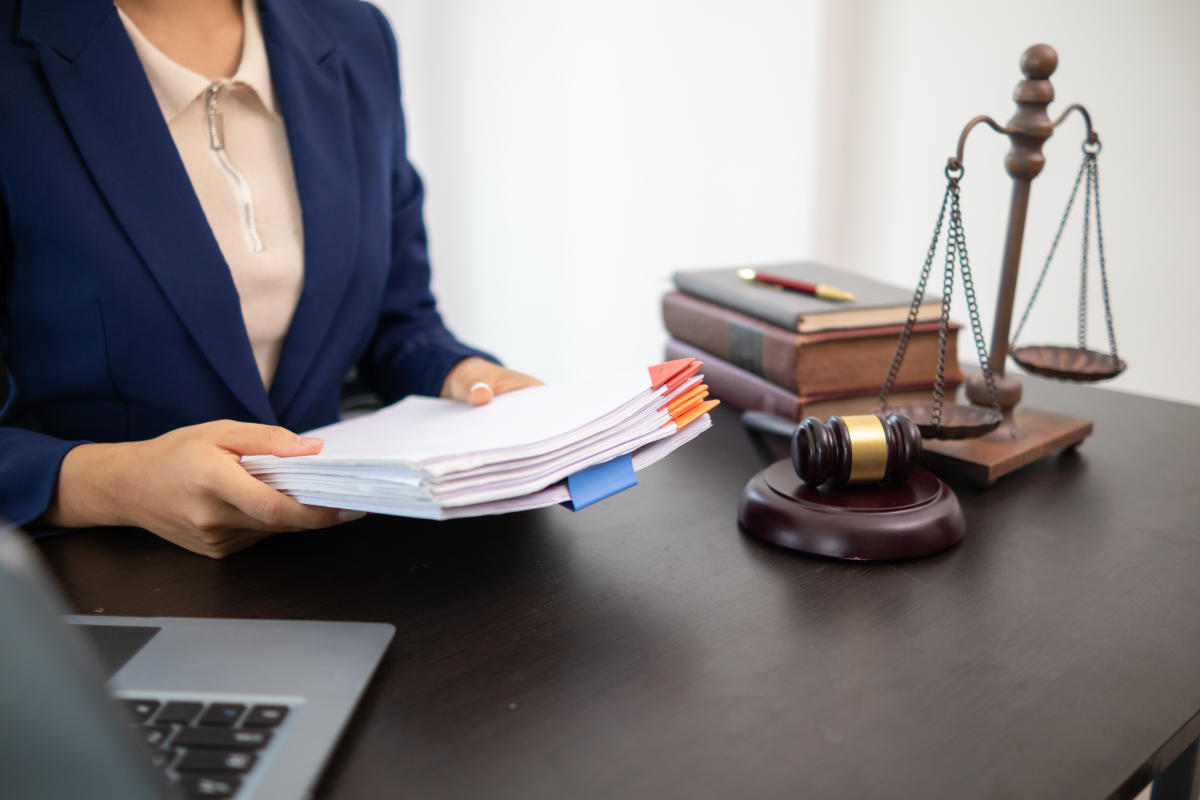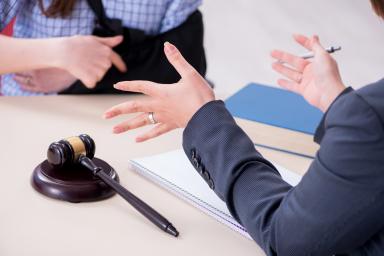How Long Does a Slip-and-Fall Case Take?

Many factors may influence how long your personal injury case takes. While some of them are under your control, others may be left to the mercy of the court system and the opposing party in your case. Throughout this article, we will paint a realistic picture of the complete litigation timeline. From hiring an attorney to filing a lawsuit and the factors that influence each stage, follow along to better understand what you can expect.
Hiring a Slip-and-Fall Lawyer
It’s time to hire an attorney. You’ve likely never had to go through this process before and have a few questions on how it goes. In the section below, each step of the hiring process will be broken down alongside an estimate of how long each step takes.
Where to Look?
A simple Google search will tell you the market is full of lawyers boasting to be the best in the business. It can be hard to know who to trust, and it may feel daunting weeding your way through the competition. There are a few tricks to finding the right fit for you. The first place to start is with peer recommendations. Maybe you’ve had a relative or friend who suffered a fall and worked with a great attorney that they might recommend. Additionally, your local Bar Association may offer recommendations for attorneys based on your needs.
This may be one of the more lengthy processes as many professionals are vying for your business. To help narrow your search and provide recommendations, Expertise has put together a thoroughly researched slip-and-fall lawyer directory. Let us handle the connection for you through our concierge services. We'll contact providers on your behalf and match you with the most qualified attorney.
Establishing Communication
Once you have found a few attorneys in your area, it’s time to reach out and set up some consultations. In your introduction, include a brief introduction of yourself and the type of case you are pursuing (slip-and-fall accident). You may also want to include how you came across their business. To save time and energy, type out a script including all necessary information so you can copy and paste when emailing each prospective lawyer.
Interview Process
It may feel intimidating to set up multiple interviews, and though it seems much easier to pick the first one and be done with it, don’t settle. Ensuring you have chosen the right attorney can make all the difference in your case. Be sure to ask about their current caseload and how soon they can begin on your case. This will ensure you are hiring someone who can focus on getting your case resolved. Ask if they have handled cases similar to yours, and how long settlements have taken to secure in the past. An attorney who has a good success rate with cases that resemble your own will have a good idea of how quickly a resolution can be reached for you.
Contract Agreement-and-Payment
Once you have selected the right attorney for your case, a contract will be written to clearly outline the work ahead and how much it should cost you if the case succeeds. Most lawyers are paid a contingency fee, meaning they are given a percentage of the settlement in winning cases. This percentage should be clearly stated in your contract. Once the lawyer is secured, the contract agreement is a quick process, and your case may officially begin.
What’s the Difference Between a Slip-and-Fall Lawyer and a Personal Injury Attorney?
Theoretically, there is no difference between a personal injury attorney and one specializing in slip-and-fall cases. All slip-and-fall attorneys have personal injury law backgrounds. However, when an attorney lists a specialization, you can be sure that they have experience with similar cases and, therefore, might be a better fit to secure your desired outcome.
Hearings
This next section will outline the litigation process, along with an estimated timeline, to give you a better idea of how long your case may take.
Complaint
This is where you formally begin the litigation process. The complaint includes the complete and accurate account of your injury, aka the reason for the lawsuit. You must file the complaint in court and deliver it to the opposing party along with a summons. This process takes two weeks to a month to gather all necessary information, file the complaint, and serve paperwork to the other side.
Response
A response to your complaint is required from the other side within 20 to -30 days, depending on where you live. The response will be their answer to your complaint and will be filed in court as well as delivered to you.
Demand Letter
Once the response is received, your attorney will send a demand letter. The demand letter lets the other side know what you want to resolve the case. In this letter, you will include the reasons why you feel you are legally entitled to compensation. The opposing party may respond and negotiate at this time. This process can take anywhere from two weeks to one month.
Pre-Trial
In this period, you (and your attorney) will prepare your case in great detail. This is where it will come in handy to have documented all evidence of the case leading up to this point (medical bills, photos of the location, surveillance). Both parties will work together to exchange information truthfully. This process can take several months to ensure you have a strong case.
Settlement Hearing
As most slip-and-fall cases end with the settlement hearing, this will likely be the final stage. Both parties will work together to try and resolve the case in a way that suits them both. There may be informal discussions between both parties to try and reach a settlement or a formal mandatory settlement hearing. This stage can take a few months to resolve between the informal and formal discussions.
When Will My First Hearing Be?
To summarize, it may take several months before you appear for the first settlement hearing. Negotiations may occur at any point in the litigation process, but if your case follows the normal timeline, it could take up to a year before you have the formal hearing.
Why Do Slip-and-Fall Cases Take So Long To Resolve?
Between compiling evidence, the litigation process, and the judge’s rescheduling, slip-and-fall cases can take a long time to resolve. There is no quick fix when resolving your case. Though it takes time, the end result is worth it if it means fair compensation for your injuries. The points below look deeper into why your case will take so long to resolve.
Proving Negligence
Substantial evidence is needed to prove that your injury was the fault of the party you are suing. It will need to be established that they owed you a duty of care (such as a shopping environment free of risk), and they breached that duty of care, which led to your injury. To help expedite this, make sure to keep complete documentation directly following your injury.
Long-Term Medical Care
Medical bills are starting to pile up around you, and you may feel the need to rush into a lawsuit to begin paying off these debts. However, it is important to be sure that you have a clear understanding and documentation of your medical needs going forward to ensure total compensation for your injuries. After all, you can only sue once, so be sure that all aspects are covered before launching the complaint. This may include obtaining medical devices, arranging home healthcare, and planning for surgeries and rehabilitation.
Pretrial and Discovery Period
Another factor to consider is the pretrial and discovery period. It takes clear evidence to prove fault during a slip-and-fall case and gathering it may take some time. This may mean collecting video surveillance or witness testimony from others. The opposing side may use this time to slow down the case by being purposefully defiant or slow. During pre-trial motions, your attorney may ask the judge to order the opposing side to comply within a specific timeframe to speed up this period.
Appeals
If the lawsuit goes to full trial and a decision has been reached, it may not be the end of the road. The defendant has the opportunity to appeal to the court following their decision. The US Department of Justice describes an appeal as “an opportunity for the defendant to try to raise specific errors that might have occurred at trial.” This does not mean that another trial will occur but will allow the appeals court to review the case and determine whether or not the initial ruling should stand.
How To Find the Best Slip-and-Fall Lawyer
As stated above, knowing how to find a lawyer that best suits your needs can be challenging. Expertise takes the time to research the most highly recommended attorneys in your area. It cross-references that list with accreditations and availability to ensure we’ve got the top picks in your area. Check out our Slip-and-Fall Directory to help get your case the expertise you need to be successful.
Expertise.com StaffAuthor
Step into the world of Expertise.com, your go-to hub for credible insights. We don't take accuracy lightly around here. Our squad of expert reviewers, each a maestro in their field, has given the green light to every single article you'll find. From rigorous fact-checking to meticulous evaluations of service providers, we've got it all covered. So feel free to dive in and explore. The information you'll uncover has been stamped with the seal of approval by our top-notch experts.

![How Much Does a Slip-and-Fall Lawyer Cost? [2023] DUP IMAGE](https://images.ctfassets.net/k00sbju4hbzq/6VjmgolPspyVjYLOfVY4wl/a1f9b84358d5e0069656c41ac3e63e96/Depositphotos_260604210_XL.jpg?fit=fill&w=384&q=75)


